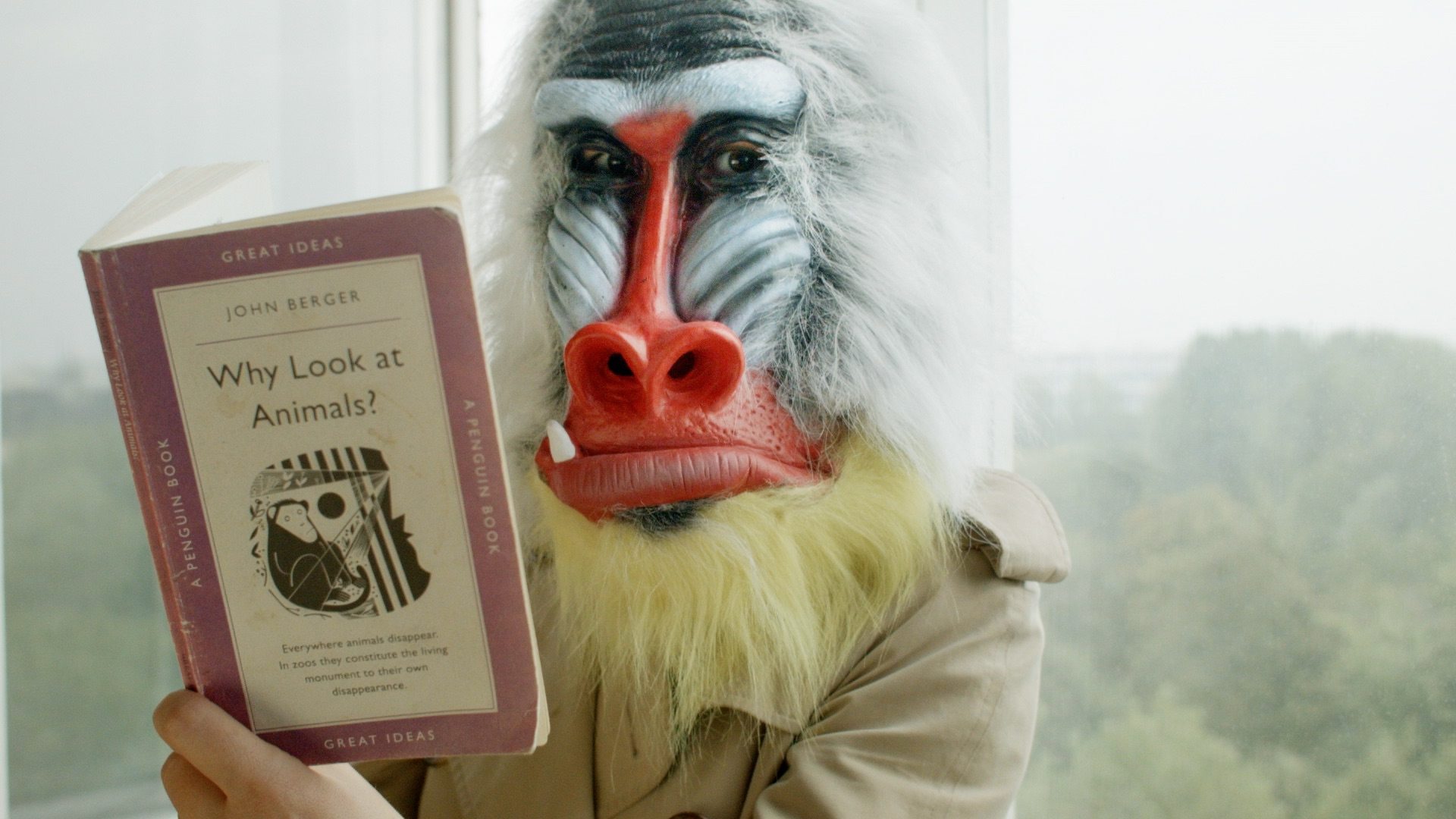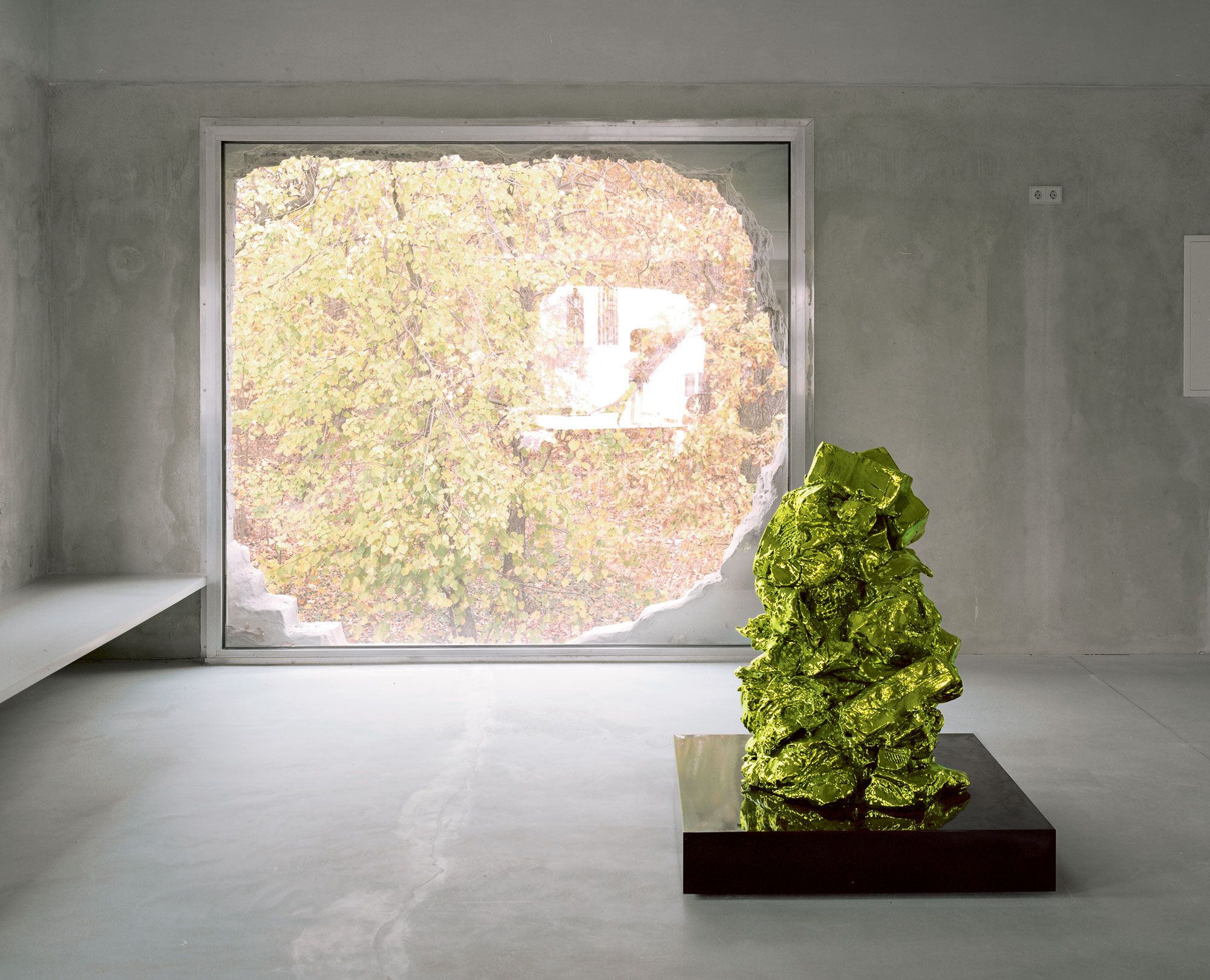Holiday Cave Paintings at the Villa Santo Sospir: JEAN COCTEAU’s Greatest Gesamtkunstwerk
|MARTIN MOSEBACH
The Villa Santo Sospir lies at the outermost end of Cap Ferrat on the Côte d’Azur, right next to the peninsula’s lighthouse. W. Somerset Maugham’s Villa Mauresque towers above it. Like all the other houses surrounding it, Maugham’s villa is significantly more grand than the house where Jean Cocteau and his friend Édouard Dermit spent ten summers as guests of a young woman named Francine Weisweiller. Cap Ferrat used to be called Santo Sospir [“Holy Sigh”], and the Spanish contractors of the villa wanted to memorialize its old name. As a setting for Cocteau – a man of playful passions and flirtatious melancholy – it was not a bad choice, for it oscillated coyly and blasphemously between the savior’s dying breath and spoiled gluttony.

From the outside, it is impossible to recognize Santo Sospir as the place where one of the twentieth century’s greatest decorative talents was able to express himself without restraint. The villa matches the banal uniformity of wealthy vacation residences in the South of France, undecidedly wavering between farmhouse and bungalow references. The location is admittedly hard to surpass. The coastal cliffs let the ocean appear close yet perpetually out of reach from where the guests of Santo Sospir bathed in a swimming pool hidden from nosy glances.
Perhaps Francine Weisweiller would have purchased a different house had she anticipated its ensuing ornamentation. She came from a moneyed Jewish family and, at the age of 17, married a man whom she divorced immediately, a scandal for which her parents disowned her. Her second marriage to the wealthy Alec Weisweiller was unhappy as well, but had not yet ended in divorce, even though the couple no longer lived together. Before her second marriage, Francine must have developed a taste for smoking opium – a habit that she and Cocteau would bond over.

The two met during the filming of one of Cocteau’s most beautiful films. Les Enfants Terribles was made shortly after the war under half-improvised circumstances. Cocteau’s athletic, young friend Dermit, the son of a miner, and the vivacious Nicole Stéphane, born a Rothschild, were cast in its lead roles. Stéphane’s cousin Francine was able to offer her palatial hôtel particulier at Paris’s Place des États-Unis as a set for the film. In its Belle Époque ballroom, the lovesick hero of Les Enfant Terribles recreates the shabby bedroom of his childhood. Here, Dermit sighs out his soul to the sounds of Bach’s Vivaldi adaptations. After the filming, Francine invited the master and his friend to vacation in Santo Sospir. There, the three must have grown close, since the house remained Cocteau’s summer residence from then on.
Cocteau apparently was not able to imagine his villeggiatura without work. He probably felt that Francine’s house was too impersonal for him to spend an extended amount of time there without making some adjustments. Likely inspired by the Surrealists, he was among the first to rediscover a taste for the ornamentalist decorations of the late nineteenth century. His own country home near Paris must have been bursting with the Belle Époque’s bric-à-brac. But at Francine’s, he was greeted by plain white walls and simple wicker furniture.
There is no form of art that Cocteau did not try out himself during his lifetime. He was a poet, an author of novels and plays, a screenplay writer, a director, and an illustrator. He was not shy to apply his talent to the design of posters, fabrics, mosaics, and costume jewelry, either. The empty vastness of Santo Sospir, however, called for a grander form.







The Ingres Museum of Montauban, a city in the South of France, hosts a painting that Jean-Auguste-Dominique Ingres created in 1813 for the bedroom of Napoleon’s Quirinal Palace in Rome. The work was inspired by Ingres’s favorite epic of the great demiurge and was titled The Dream of Ossian. Word had not yet gotten out that Ossian was a literary fabrication – Goethe, too, considered the made-up bard a Celtic Homer. In Ingres’s painting, the sleeping singer sits with his head rested on an Irish harp. Behind him, white as though they were sculpted from snow, the frozen heroes lean onto one another, crystallized in a magical sleep. In Classicism, this painting is without equal. It uniquely combines Winckelmann’s antiquity with proto-surrealism. Despite Picasso’s In- gres phase, Ingres was not a role model in a time that favored sketches. But looking at Cocteau’s murals in Santo Sospir, one would bet that he knew The Dream of Ossian.
Cocteau’s forays into painting were less successful, but his drawings are brilliant. His straight lines carry the tension of a steel violin string. Cocteau tried to reduce bodies to the most concise formula, writing a body rather than drawing it. His handwriting contained an elegant infantility as well as a classicist impersonality that often expressed itself in his drawings. The outline drawings of Renaissance book illustrations, which Maillol revived in the twentieth century, acted as models for Cocteau’s works on paper, and his drawings were therefore first and foremost book art.
This style, made for small formats, was now to be used to decorate entire walls of the Villa Santo Sospir. Transferring it into an oversize format created significant issues. The appeal of a Cocteau drawing is made up of the inimitable mix of precision and nonchalance. His Greek hermaphrodite heads, which one could call classicist caricatures, seem to be traced from one offhanded stroke, yet they simultaneously appear razor-sharp. Cocteau perfectly governed the field of a blank sheet, with proportions that appear in primordial harmony. Super-sized, this effect does not naturally translate, because it is clear that lines cannot be drawn offhandedly anymore – that they require planning and draft sketching. The white space encompassed by the black line takes up much more room. A curious contrast thus occurs between the heavy, muscular bodies of athletes that lie wrapped up in one another in their sleep and the sheer lightness of the drawing.

It is likely not The Dream of Ossian that covers these walls like a monumental cobweb, but rather the dreams of opium-induced stupors with Francine and Édouard. The heads of the sedated heroes, which break with the beauty cult to which the drawings seem devoted, are unsettling. These vigorous giants with their spiky nipples have the cartilaginous, soft heads of embryos with rounded foreheads. In all their physical glory, they are unfinished beings that automatically lead the viewer to speculate on the master’s erotic taste. At times, Cocteau tried to contrast the rigid black and white by adding color, but this brought him to the limits of his improvisational talent. His sky-blue looks like a distracted attempt at wall painting. Cocteau’s drawings are especially suitable to be transferred onto Gobelin tapestry, since the structure of the wool thread lends them firmness. In the light-wood-panelled dining room, this tapestry attains the quality of a stage curtain, suited for a melancholic and symbolistic poetic drama.
In accordance with his propensity to stage his art as an exquisite comedy of manners, Cocteau shot a short film about the paintings of Santo Sospir. Picasso, who lived nearby and had been connected to Cocteau in a volatile friendship since World War I, let himself be filmed whilst painting, too. The medium of film lends itself magnificently to the portrayal of a carefully orchestrated artistic plan as much as a spontaneous flash of inspiration. The suit Cocteau designed for himself, too, gains significance in discussing an artist who considered fashion not as a fleeting phenomenon, but as a manifest expression of an aesthetic existence. In hindsight, Cocteau’s jacket with cuffed sleeves, a broad collar, and tiny lapels resembles the popular “leisure suit” of the 1960s and 70s. To have inspired it reveals the dangers that are tied to alternative paths in fashion.
One day, Francine Weisweiller must have grown tired of their delicate threesome. After ten years with Cocteau and his friend, she was no longer a young woman and sought a more stable bliss in a new marriage to a man who wrote crime novels. The painting was finished by then as well. It had not turned Santo Sospir into an overloaded art cave like other villas in which artists have acted out their decorative urges. The summer house seems to have been touched by a magic wand that tenderly surrealized its rooms, and thus accomplished Cocteau’s ultimate ideal of art – one between decoration and dream.
Credits
- Text: MARTIN MOSEBACH
- Photography: FILIPPO BAMBERGHI

